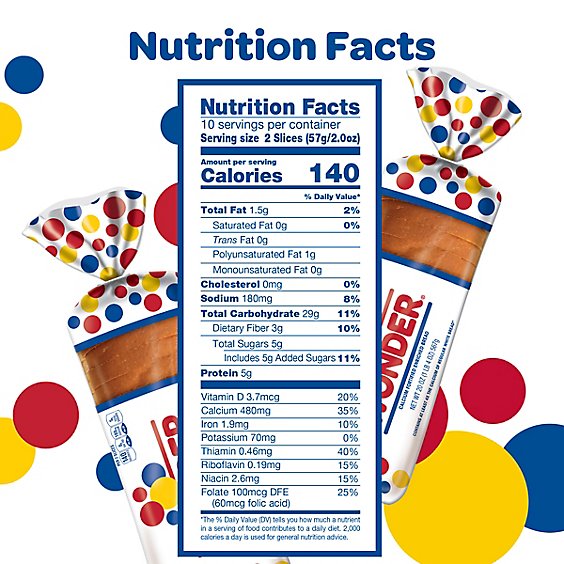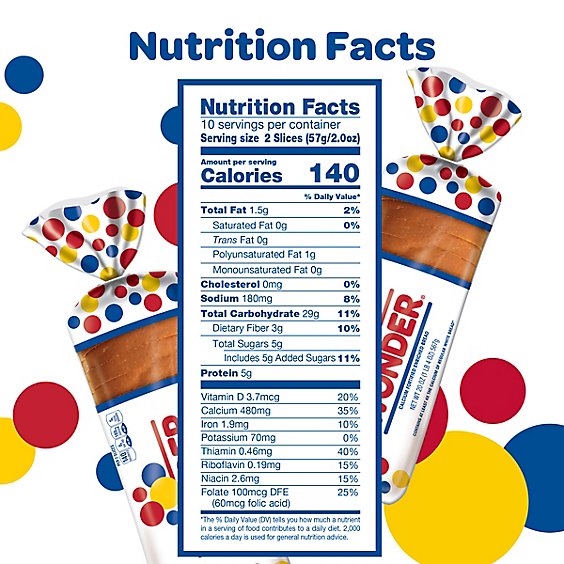Trill exercises on the piano enhance agility and finger independence. These drills focus on rapid alternation between two adjacent notes.
Practicing trills is instrumental for pianists looking to improve their technical skills and precision. With consistent practice, you can achieve smoother and more effortless trills which are essential for the embellishment of classical and baroque music. These exercises not only benefit your performance of trills but also contribute to greater overall finger dexterity and control.
It’s crucial to start slowly, ensuring each note sounds clear and even, and then gradually increase the speed. By dedicating time to trill exercises, pianists can significantly refine their articulation and touch, leading to more expressive and nuanced playing.

Credit: music.stackexchange.com
Introduction To Piano Trills
Piano trills spark life into music, creating a captivating, vibrating effect. As quick alternations between two adjacent notes, they add tension and release, drama, and colour to compositions. For pianists, mastering the art of the trill is a journey that can transform a piece from simple to stunning.
The Magic Of Trills
A trill demands precise finger agility and rhythm. It involves swiftly alternating between two neighboring notes. Typically, the notated note is the starting point, quickly oscillating to the note above. Trills can vary in speed and length, allowing for dynamic expression. Composers use trills to convey a range of emotions, from excitement to anxiety, within their music.
Where Trills Make Their Mark
Trills enhance musical pieces across genres. Classical sonatas dabble in the delicate dance of trills, while romantic concertos use them to add a layer of richness. Jazz musicians infuse trills for spontaneity and vibrato. They elevate the narrative in opera and introduce whimsy in ballet scores. Recognizing where and how to execute a trill beautifully is crucial for any aspiring pianist.
Trill Technique Basics
Mastering the trill technique on the piano is essential for bringing the works of composers like Mozart and Beethoven to life. A trill is a rapid alternation between two notes which creates a shimmering sound effect. Learning the basics of trill technique involves developing finger independence and strength, as well as starting with slow practice to ensure precision.
Finger Independence And Strength
Building finger independence is a cornerstone of effective trill execution. The aim is to move one finger while keeping the others still and relaxed.
- Exercise each finger by pressing down on the keys, focusing on fluid movement and even pressure.
- Start with simple drills, moving from the thumb (finger 1) to the index finger (finger 2), and so on.
- Utilize finger-strengthening exercises to prevent fatigue during longer trills.
Starting With Slow Practice
Begin trill practice at a slow tempo, ensuring that each note sounds clear and distinct.
- Increase the speed gradually, only after precision at a slow tempo is achieved.
- Use a metronome to maintain consistent rhythm and gradually increase the pace.
- Practice regularly and patiently, allowing the hands to develop muscle memory.
Improving Trill Speed And Clarity
Mastering trills on the piano means combining speed with precision. A trill is a musical ornament that, when played well, can bring a piece to life. To improve, focus on both the pace at which you can move your fingers and how clearly each note sounds. The right exercises can take your trills from shaky to spectacular. These strategies will guide you towards more fluid and crisp trills.
Metronome Use For Gradual Increase
Start with your metronome set to a slow tempo that allows you to play the trill with complete control. As accuracy improves, increase the metronome speed gradually. Follow the steps below:
- Set your metronome to a tempo where you can comfortably play a trill.
- Perform the trill repeatedly, ensuring each note is clear and even.
- Increase the speed by one or two beats per minute after several successful attempts.
- Repeat this process, building speed while maintaining clarity.
Consistency In Finger Motion
Smooth trills require consistent movement from your fingers. To develop this:
- Isolate the trill and focus on the action of each finger.
- Ensure fingers move from the base knuckle and stay relaxed.
- Stay aware of equal pressure and volume from each finger.
- Practice trills slowly focusing on motion consistency.
- Gradually speed up as control improves.
Exercises For Mastery
Mastering trills on the piano requires focused practice. Trills add expressiveness and complexity to piano music. To master trills, pianists use specific exercises. These exercises strengthen fingers, improve agility, and build control. This section covers exercises that help pianists achieve trill mastery.
Five-finger Patterns
Start with five-finger patterns to build a foundation. These patterns involve playing consecutive notes with all five fingers. They help pianists gain finger independence, essential for fluid trills.
- Practice these patterns in every key.
- Focus on even tempo and rhythm.
- Aim for a light, bouncing touch.
After mastering a pattern, add trills within the sequence. For example, trill between the fourth and fifth fingers as these are often the weakest.
Chromatic Approaches
Chromatic approaches polish the precision of finger movement. These exercises involve trilling between two adjacent notes, called a semitone.
- Start on C with the first finger.
- Trill to C# with the second finger.
- Repeat this pattern up and down the keyboard.
Speed is not the goal. Precision and control take priority.
Incorporating Trills Into Scales
Scales are perfect for integrating trills into movements. They provide a structured approach.
| Scale | Trill Combination |
|---|---|
| C Major | Trill on E and F |
| G Major | Trill on A and B |
| Bb Major | Trill on C and D |
Within each scale, select two notes and trill between them. Choose different intervals as you progress, starting with semitones and moving to full tones.
Trills In Different Musical Contexts
The trill, a thrilling piano technique, finds its unique voice across different eras. It captivates listeners with its shimmering sound. We’ll explore how this technique blossoms in various musical contexts.
Baroque Ornamentation
Baroque music thrives on decoration. The trill adds drama and flair to this period’s compositions. Fluid and intricate, it reflects the era’s artful complexity.
- Ornamentation was essential in Baroque music.
- Composers like Bach and Handel wrote trills to embellish melodies.
- Fast fingerwork on the keyboard is key for an authentic baroque trill.
Romantic Expressiveness
During the Romantic period, trills convey deep emotion. They’re like the piano’s heartbeat, ebbing and flowing with feeling.
- Trills accompany the powerful surges of romantic melodies.
- They add intensity to the passionate narratives in music by Chopin and Liszt.
- Dynamics of trills range from whisper-soft to thunderously loud.
Contemporary Applications
Modern music sees the trill reborn, with genres bending its use. Boundaries blur as trills find new purposes.
- Trills punctuate jazzy riffs and build tension in modern scores.
- Innovative composers like Gershwin integrate trills to create fresh sounds.
- Digital keyboards assign trills new effects, expanding their sonic reach.

Credit: practisingthepiano.com
Common Challenges And Solutions
When mastering the art of piano trills, pianists often face a series of hurdles. Understanding these common challenges and knowing their solutions can elevate your trill executions to new levels of brilliance. Let’s dive into the specifics of how to tackle each obstacle.
Overcoming Tension
To produce fluid trills, relaxation is key. Tension can cause trills to sound labored and uneven. Try these steps:
- Breathe deeply and release shoulder stress before playing.
- Practice trills slowly, focusing on gentle finger movements.
- Gradually increase speed while maintaining a relaxed posture.
- Regularly shake out your hands to avoid muscle fatigue.
Dealing With Speed Plateaus
It’s normal for progress in trill speed to sometimes halt. Breakthrough by:
- Isolating the trill and using a metronome to push your speed incrementally.
- Varying rhythms within the trill exercise to build agility.
- Incorporating wrist and forearm motions to assist finger action.
- Repeating the trill in bursts rather than sustained to develop speed.
Finger Independence Issues
Trills demand that fingers move independently of one another. Boost finger independence through:
- Practicing scales and arpeggios to develop control.
- Performing finger-strengthening exercises away from the piano.
- Playing trill exercises with varied finger combinations.
- Ensuring that each finger taps the key with equal force and speed.
Advanced Trill Techniques
Welcome to the virtuoso’s playground, where advanced trill techniques transform simple melodies into stunning showpieces. Mastering trills is not just about speed; it’s about precision, grace, and intensity. Let’s explore the intricacies of advanced trills on the piano to elevate your playing.
Trills With Various Dynamics
Variety is key in music. Dynamic trills add contrast and emotion to your playing. Here’s how to practice:
- Start with a soft trill, then gradually increase the volume.
- Reverse the process by beginning loudly and dimming down to a whisper.
- Experiment with sudden shifts in dynamics, like from piano to forte.
- Play an arpeggio in your chosen key.
- At the peak, add a trill on the top note.
- Use different fingerings to find the most comfortable one.
- Practice trills in short bursts, gradually increasing the length.
- Relax your wrist and fingers to prevent tension.
- Keep a consistent tempo and rhythm throughout the exercise.
Incorporating Trills into Arpeggios
Incorporating Trills Into Arpeggios
Enhance arpeggios with trills for a captivating effect. Follow these steps:
Extended Trills and Stamina
Extended Trills And Stamina
Long trills demand endurance. Build stamina using these techniques:

Credit: www.reddit.com
Frequently Asked Questions Of Trill Exercises Piano
How Do You Practice Trills On The Piano?
Start by playing the two trill notes slowly and evenly. Gradually increase the speed as your fingers become more agile. Use a metronome to ensure consistent pacing. Practice trills in different keys to build dexterity. Remain relaxed to avoid tension and facilitate smooth trilling.
How Can I Get Better At Trilling?
To improve your trilling, practice vocal exercises daily, focus on tongue flexibility, start with slow, steady trills and gradually increase speed. Listen to trilling in languages that use it and mimic. Lastly, seek feedback from a language coach or speech therapist.
How Can I Improve My Trill Speed?
Start slow and gradually increase your metronome speed as you practice trills. Ensure your fingers stay relaxed and use minimal motion. Regularly practice finger independence exercises to build dexterity. Stay consistent with daily practice for improvement.
How Do You Speed Up Trills On A Piano?
To speed up piano trills, start slowly to master the finger movement. Gradually increase the tempo, using a metronome for consistency. Ensure your fingers stay relaxed, and practice regularly to build agility and speed.
Conclusion
Mastering trill exercises on the piano can unlock new expressiveness in your playing. With consistent practice, precision and speed will follow, enhancing your overall musicality. Remember, patience and persistence are key. Embrace the journey of improvement and let every trill you play resonate with confidence and skill.
Keep practicing, keep learning, and the music will continue to flow.








